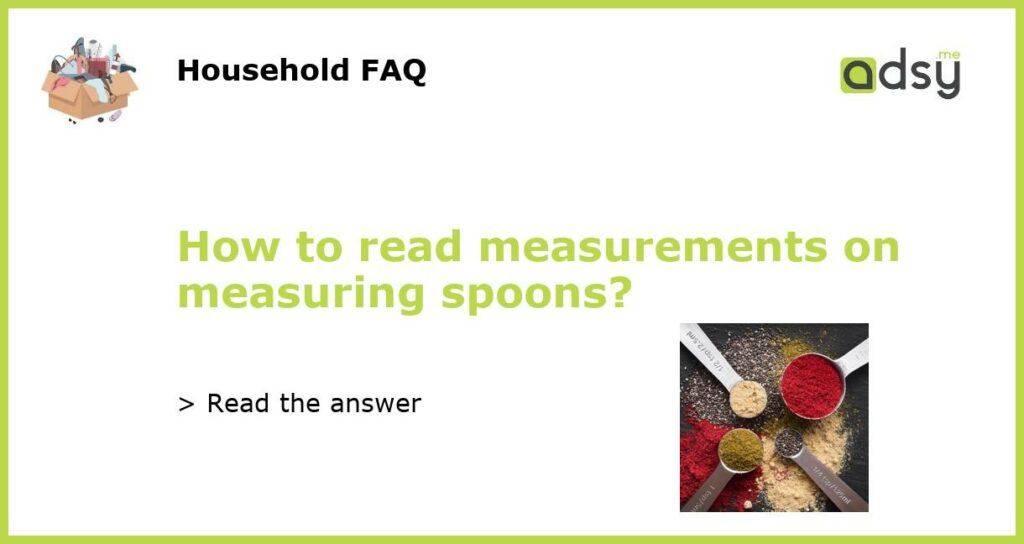Understanding Up Close: How to Read Measurements on Measuring Spoons
Measuring spoons are essential in cooking and baking. They allow us to be precise in our measurements and ensure that our food has the right flavor and consistency. But if you’re new to cooking, you may not be familiar with how to read the measurements on your measuring spoons. In this article, we’ll take a closer look at how to read measuring spoon measurements correctly.
The Basics: Understanding Measuring Spoon Sizes and Shapes
The first step in understanding how to read measurements on measuring spoons is understanding the different sizes and shapes of measuring spoons. Measuring spoons come in different sizes, ranging from 1/8 teaspoon to 1 tablespoon. The most common shapes are oval and round, and some spoons may have a narrow, pointed end to help you dig into containers and tight spaces.
Decoding Measuring Spoon Measurements
When reading measurements on measuring spoons, it’s important to understand the difference between liquid and dry measurements. When measuring liquids, always use spoons with a pour spout and read the measurement at eye level. When measuring dry ingredients, level off the spoon with a straight edge, such as a spatula or knife, for accurate measurements.
Overcoming Confusion: Tips for Reading Measuring Spoon Measurements
Reading measuring spoon measurements can be confusing, especially if a recipe calls for fractions of a teaspoon or tablespoon. To make reading measurements easier, some measuring spoons have both metric and standard measurements. When using a recipe with both measurements, make sure you are using the correct spoons for the measurement system used in the recipe.
Measuring accurately is key to creating delicious and consistent meals. By understanding measuring spoon sizes and shapes, decoding measurements, and applying tips for overcoming confusion, you’ll be well on your way to measuring like a pro. Happy cooking!






